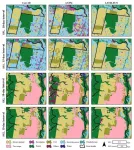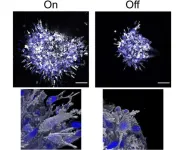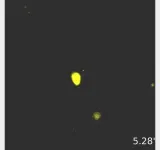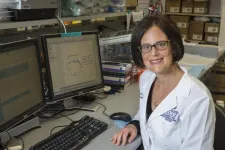(Press-News.org) Crop-livestock integration (CLI) systems combine the growing of crops in rotation or consortium, especially grain crops such as soybeans, corn and sorghum, and forage plants used to feed cattle and pigs, with the raising of livestock, typically beef cattle. The crops provide most of the cash income, while the livestock has food available during the dry season and facilitates seed management. CLI improves soil fertility, raises yields and helps rehabilitate degraded areas while reducing the use of pesticides, mitigating the risk of erosion and the seasonality of production, and lowering operating costs. It makes farming more sustainable: crops benefit livestock and vice-versa; the environmental impact of agricultural activity falls; and the carbon footprint is reduced.
In a study reported in the journal Remote Sensing of Environment, researchers affiliated with the Brazilian Agricultural Research Corporation (EMBRAPA) and the State University of Campinas (UNICAMP) developed a method based on artificial intelligence (AI) to identify CLI areas by analyzing satellite imagery. According to the authors of the article, this knowledge can benefit Brazilian agriculture in several ways.
The study was funded by FAPESP via three projects (2021/15001-9, 2018/24985-0 and 2017/50205-9), and by the Netherlands Organization for Scientific Research (NWO).
“The main aim of the project, which was an international collaboration to address issues relating to sustainable agriculture, was to promote the integration of remote sensing data with satellite images using AI, precision agriculture and biogeochemical models to understand and create models of the dynamics of this type of system,” said Inácio Thomaz Bueno, first author of the article. A forest engineer, Bueno conducted postdoctoral research on the monitoring of CLI systems using remote sensing data and satellite imagery with high spatio-temporal resolution.
“We also aimed to increase knowledge of CLI, given the many questions still open and the lack of effective methods for monitoring and development of its potential, as well as the need to identify areas in which it’s being practiced, in line with the UN’s Sustainable Development Goals [SDGs] relating to agriculture, the environment, and economic and social development,” he said.
The team used deep learning techniques to process satellite imagery time series and extract patterns pointing to areas where CLI was being practiced. Deep learning is a type of AI that uses neural networks with multiple layers to model and process complex patterns in data.
The study sites were areas in the states of São Paulo and Mato Grosso. Object-based image analysis was performed at intervals of 10 and 15 days in four steps: CLI data acquisition via Planetscope, a constellation of satellites that capture high-resolution images of Earth’s surface, showing changes in the areas over time; training of algorithms to recognize patterns associated with CLI; mapping of CLI areas; and assessment of the model’s accuracy by comparing automatic results with previous knowledge.
For Bueno, the promising results obtained by this method, which involved monitoring and mapping CLI areas via satellite images and analyzing their dynamics over time, can have various kinds of positive impacts on agriculture. “Precise identification of CLI areas permits more efficient resource management to optimize land allocation and use. In addition, diversification of activities offers farmers an additional source of income,” he said.
The detailed information derived from CLI mapping also provides a sound basis for decision-making by farmers, who can feel confident that their crop-livestock management and investment policies are grounded in science.
Another benefit of the approach is that it encourages sustainable agriculture. Recognition and mapping of CLI areas can support government policies and programs to promote sustainable practices, contributing to regularity of food supply and income via financial incentives and specific lines of credit that support the adoption of integrated systems.
About São Paulo Research Foundation (FAPESP)
The São Paulo Research Foundation (FAPESP) is a public institution with the mission of supporting scientific research in all fields of knowledge by awarding scholarships, fellowships and grants to investigators linked with higher education and research institutions in the State of São Paulo, Brazil. FAPESP is aware that the very best research can only be done by working with the best researchers internationally. Therefore, it has established partnerships with funding agencies, higher education, private companies, and research organizations in other countries known for the quality of their research and has been encouraging scientists funded by its grants to further develop their international collaboration. You can learn more about FAPESP at www.fapesp.br/en and visit FAPESP news agency at www.agencia.fapesp.br/en to keep updated with the latest scientific breakthroughs FAPESP helps achieve through its many programs, awards and research centers. You may also subscribe to FAPESP news agency at http://agencia.fapesp.br/subscribe.
END
Method combines artificial intelligence and satellite imagery to map crop-livestock integration systems
The study, which was conducted by Brazilian researchers, supports sustainable agriculture and offers contributions to public policy formulation
2024-01-31
ELSE PRESS RELEASES FROM THIS DATE:
Pedestrian injuries from falls versus motor vehicle collisions: are we lacking critical policy and interventions?
2024-01-31
January 31, 2024—Using Emergency Medical Services (EMS) data, researchers at Columbia University Mailman School of Public Health compared the national burden of pedestrian injuries from motor vehicles to that of pedestrian falls occurring on streets and sidewalks and found that the probability of a pedestrian suffering a severe injury is higher for motor vehicle collisions as compared to falls. Yet, the public health burden of the number of pedestrians injured from a fall – severe or otherwise - is significantly higher compared to the number of pedestrians injured by a motor ...
Treatment of aggressive breast cancer: discovery of a new protein involved in the development of metastases
2024-01-31
A protein found abundantly in breast cancers that are refractory to conventional treatments is thought to cause the development of metastasis. Targeting it would prevent metastatic spread and therefore increase patients survival. These are the findings of a study conducted by a French-American team and led by a biologist at CNRS1. The study, the results of which appear on 31st January in Cell Discovery, aims to better understand the mechanisms at play in the development of primary tumours in aggressive ...
Worldwide prevalence and disability from mental disorders across childhood and adolescence
2024-01-31
About The Study: In this analysis using data from the 2019 Global Burden of Disease study, there was a high prevalence of mental disorders affecting children and youths, indicating that more than 1 of 10 (or 293 million) individuals ages 5 to 24 globally live with a diagnosable mental disorder. In terms of burden, around one-fifth of all disease-related disability (considering all causes) was attributable to mental disorders among this population. Additionally, this age period encompasses about one-fourth of the mental disorder burden across the entire life course.
Authors: Christian Kieling, M.D., Ph.D., of the Universidade ...
1 of 10 veterans diagnosed with dementia may instead have cognitive decline from cirrhosis
2024-01-31
RICHMOND, Va. (Jan. 31, 2024) – As many as 10% of older U.S. veterans diagnosed with dementia may suffer instead from reversible cognitive decline caused by advanced liver disease, according to an analysis from the Virginia Commonwealth University’s School of Medicine and the Richmond VA Medical Center.
It can be difficult for physicians to differentiate dementia from the cognitive decline caused by cirrhosis, called hepatic encephalopathy. If undetected, patients may not receive appropriate treatment that can reverse or halt the impairment. ...
Leisure-time physical activity and falls with and without injuries among older women
2024-01-31
About The Study: Participation in leisure-time physical activity at the recommended level or above was associated with lower odds of both non-injurious and injurious falls in this study of 7,100 older women. Brisk walking and both moderate and moderate-vigorous leisure-time physical activity were associated with lower odds of non-injurious falls.
Authors: Wing S. Kwok, B.App.Sc., of the University of Sydney in Sydney, Australia, is the corresponding author.
To access the embargoed study: Visit our For The Media website ...
Oxford scientists launch ambitious roadmap for circular carbon plastics economy
2024-01-31
Researchers from the Oxford Martin Programme on the Future of Plastics, University of Oxford, have outlined ambitious targets to help deliver a sustainable and net zero plastic economy. In a paper published in Nature, the authors argue for a rethinking of the technical, economic, and policy paradigms that have entrenched the status-quo, one of rising carbon emissions and uncontrolled pollution.
Currently the global plastics system results in over 1 gigatonnes per annum (Gt/annum) of carbon dioxide equivalent emissions which is the same as the total combined emissions ...
Molecule can quickly, and briefly, boost white blood cell counts
2024-01-31
New Haven, Conn. — Treatment with a molecule known as A485 can quickly and temporarily increase levels of white blood cells, a critical part of the body’s immune system, an effect that is difficult to deliver with currently available pharmaceuticals, a new Yale study finds.
In an experiment, the researchers found that exposure to the molecule in mice caused white blood cells to mobilize from the bone marrow, a response that could inform future treatment for patients who need a boost in immune activity, the researchers say.
The findings were reported Jan. 31 in the journal ...
When and how immune cells decide to form pathogen memories
2024-01-31
Unexpected findings have emerged about how and when certain infection-killing white blood cells decide to form memories about their encounters with a pathogen.
It has been known for decades that these cells can turn themselves into durable memory cells that can survive a long time after an initial infection is cleared. They are prepared to quickly recognize and eliminate future intrusions by the same kind of pathogen.
That is one reason people are resistant to some infectious diseases after exposure to or recovery from the illness. Vaccinations also work this ...
Whole blood transfusion improves survival during traumatic bleeding
2024-01-31
(Boston)—Significant bleeding due to traumatic injury is the number one cause of preventable deaths in the U.S., with the majority of deaths occurring within six hours. Emerging evidence suggests that the transfusion of whole blood (blood that is not separated into parts) is associated with a survival benefit compared to the traditional use of blood component transfusion (red blood cells, plasma, and platelets) in these patients.
A new study from researchers from Boston University Chobanian & Avedisian School of ...
Combination drug therapy shows promise for a treatment-resistant cancer
2024-01-31
FOR IMMEDIATE RELEASE
A combination of two cancer drugs could be effective against malignant peripheral nerve sheath tumors (MPNSTs) — soft tissue tumors that are stubbornly resistant to chemotherapy and radiation — according to a laboratory study led by researchers at the Johns Hopkins Kimmel Cancer Center.
Both drugs interfere with cell growth and replication but have different mechanisms of action. Used together, they suppressed the growth of MPNSTs in mouse models of human disease, the researchers found. The findings were published ...
LAST 30 PRESS RELEASES:
Bluey’s dad offered professorial chair in archaeology at Griffith University
Beyond small data limitations: Transfer learning-enabled framework for predicting mechanical properties of aluminum matrix composites
Unveiling non-thermal catalytic origin of direct current-promoted catalysis for energy-efficient transformation of greenhouse gases to valuable chemicals
Chronic breathlessness emerging as a hidden strain on hospitals
Paleontologists find first fossil bee nests made inside fossil bones
These fossils were the perfect home for ancient baby bees
Not everyone reads the room the same. A new study examines why.
New research identifies linked energy, immune and vascular changes in ME/CFS
Concurrent frailty + depression likely boost dementia risk in older people
Living in substandard housing linked to kids’ missed schooling and poor grades
Little awareness of medical + psychological complexities of steroid cream withdrawal
Eight in 10 trusts caring for emergency department patients in corridors, finds BMJ investigation
NASA’s Webb telescope finds bizarre atmosphere on a lemon-shaped exoplanet
The gut bacteria that put the brakes on weight gain in mice
Exploring how patients feel about AI transcription
Category ‘6’ tropical cyclone hot spots are growing
Video: Drivers struggle to multitask when using dashboard touch screens, study finds
SLU research shows surge in alcohol-related liver disease driving ‘deaths of despair’
Rising heat reshapes how microbes break down microplastics, new review finds
Roots reveal a hidden carbon pathway in maize plants
Membrane magic: FAMU-FSU researchers repurpose fuel cells membranes for new applications
UN Member States pledge to increase access to diagnosis and inhaled medicines for the 480 million people living with COPD
Combination therapy shows potential to treat pediatric brain cancer ATRT
Study links seabird nesting to shark turf wars in Hawai‘i
Legal sports betting linked to sharp increases in violent crime, study finds
Breakthrough AI from NYUAD speeds up discovery of life-supporting microbes
New Eva Mayr-Stihl Foundation funding initiative boosts research at University of Freiburg on adaptation of forests to global change
The perfect plastic? Plant-based, fully saltwater degradable, zero microplastics
Bias in data may be blocking AI’s potential to combat antibiotic resistance
Article-level metrics would provide more recognition to most researchers than journal-level metrics
[Press-News.org] Method combines artificial intelligence and satellite imagery to map crop-livestock integration systemsThe study, which was conducted by Brazilian researchers, supports sustainable agriculture and offers contributions to public policy formulation



